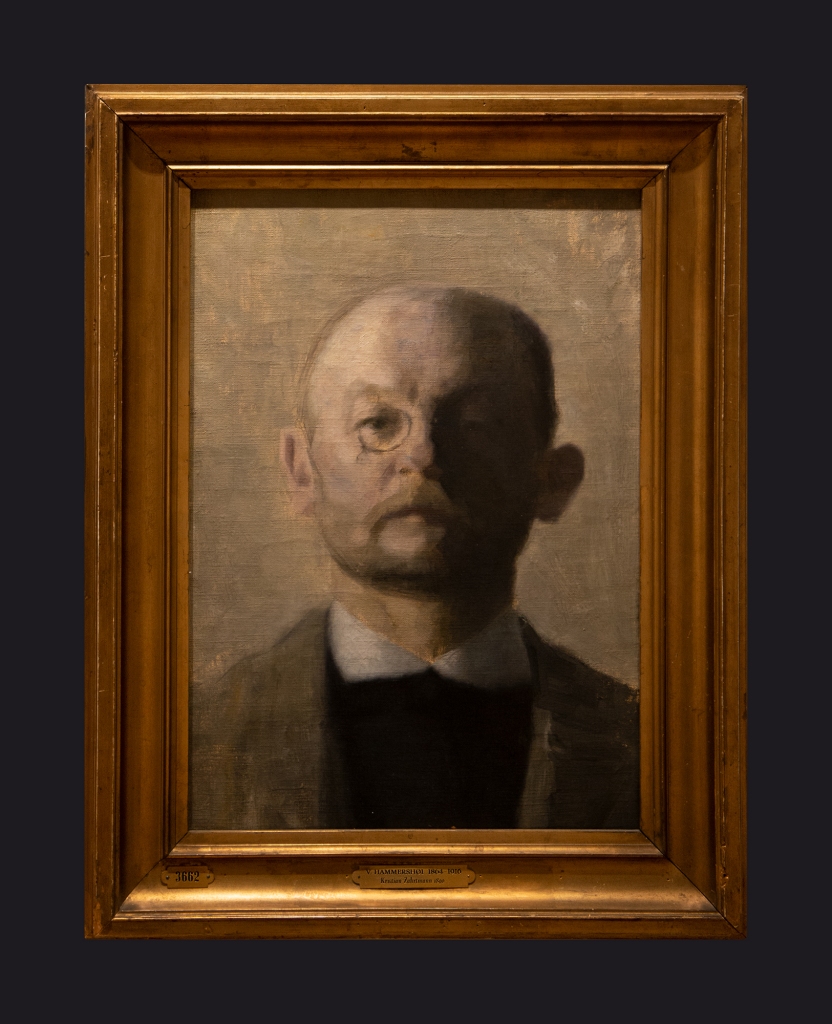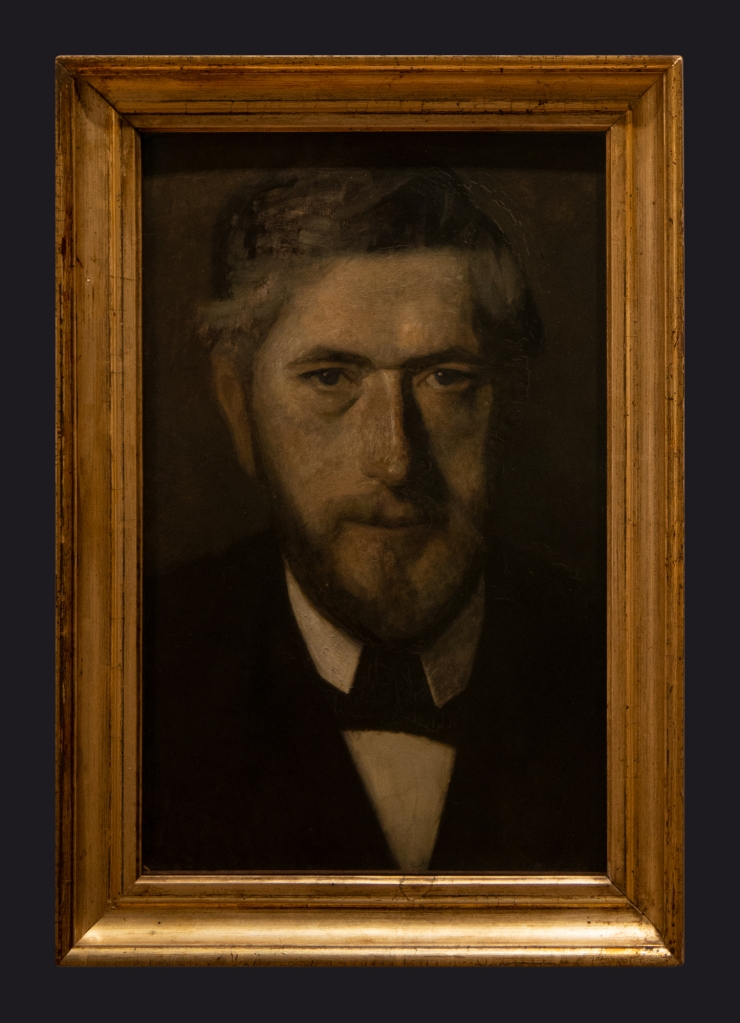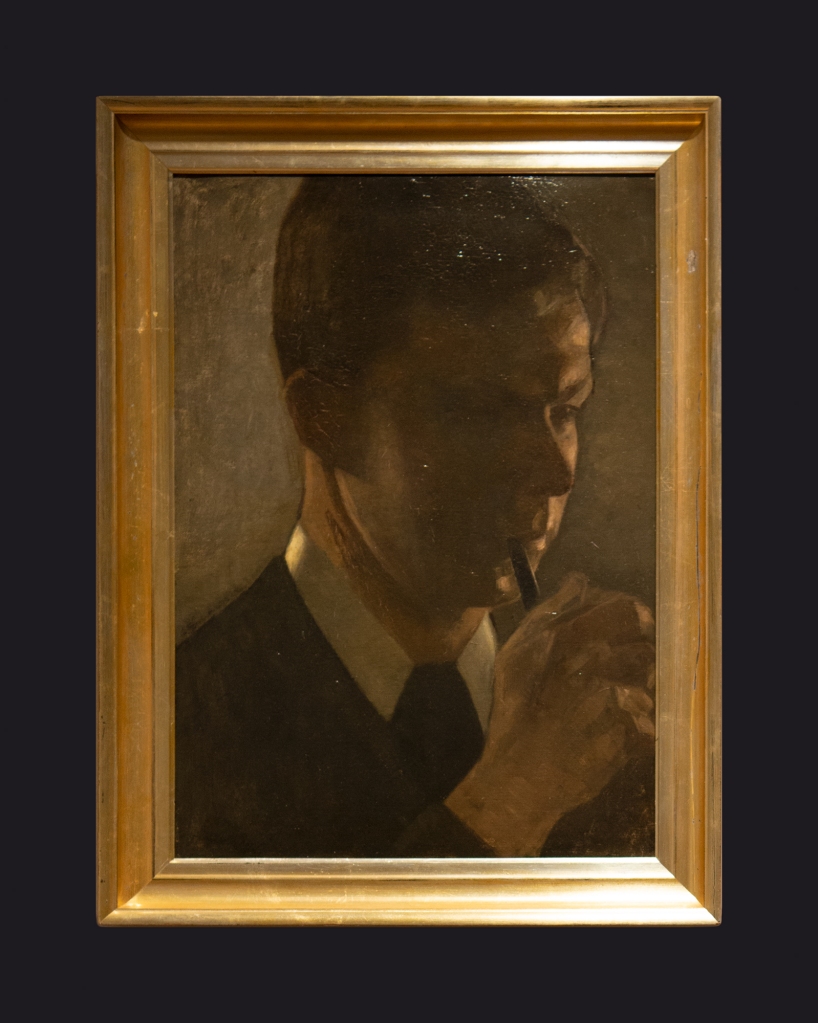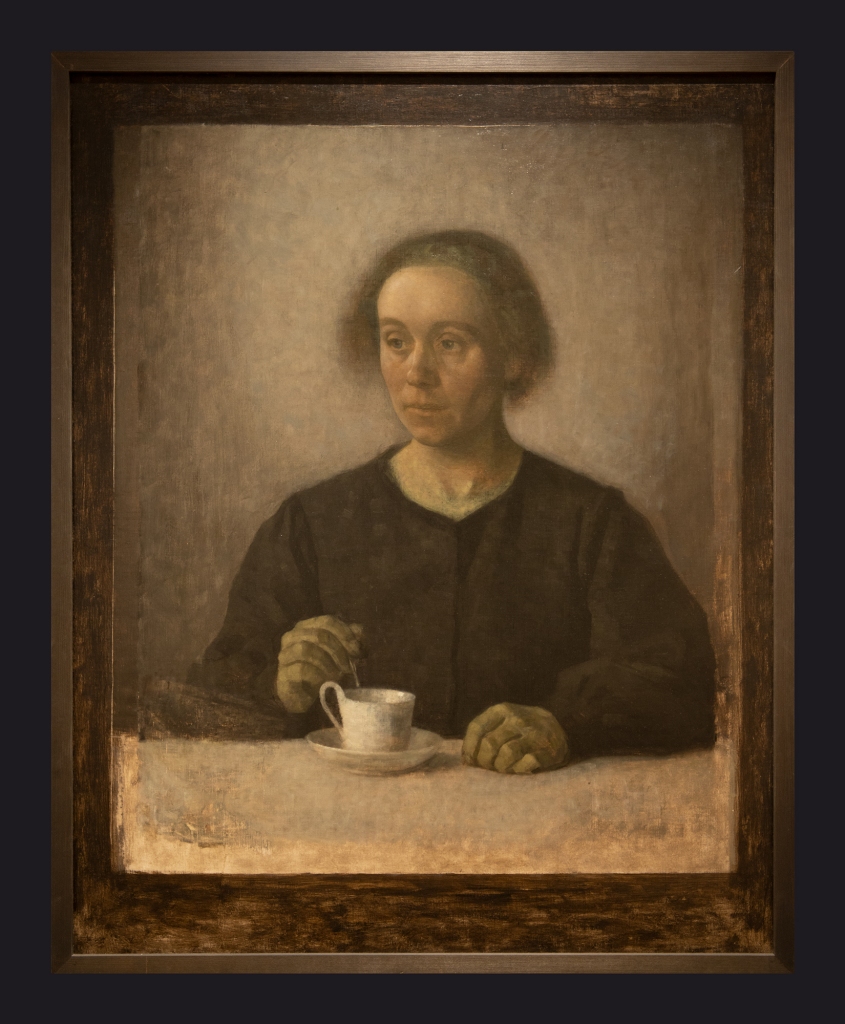 The Painter Kristian Zahrtmann (1889-1890)
The Painter Kristian Zahrtmann (1889-1890)
Collection: Statens Museum for Kunst, Copenhagen
 The Art Historian Karl Madsen, Later Director of Statens Museum for Kunst (1890)
The Art Historian Karl Madsen, Later Director of Statens Museum for Kunst (1890)
Collection: Statens Museum for Kunst, Copenhagen
 The Artist Jens Ferdinand Willumsen (1901)
The Artist Jens Ferdinand Willumsen (1901)
Collection: Statens Museum for Kunst, Copenhagen
 Portrait of Svend Hammershoi, the Artist’s Brother (1901)
Portrait of Svend Hammershoi, the Artist’s Brother (1901)
Collection: Statens Museum for Kunst, Copenhagen
 Ida Hammershoi the Artist’s Wife with a Teacup (1907)
Ida Hammershoi the Artist’s Wife with a Teacup (1907)
Collection: Statens Museum for Kunst, Copenhagen
all photographs © 2019 Leslie Hossack
These five portraits by Vilhelm Hammershøi were photographed by Leslie Hossack in The National Gallery of Denmark, Copenhagen (Statens Museum for Kunst or SMK). They are among several Hammershøi pieces forming part of the SMK exhibition entitled Sun and Soul. As is typical with his portraits, these individuals are colleagues, friends and family members.
Vilhelm’s wife Ida was his most frequent model. In this 1907 portrayal of Ida, she appears exhausted, and certainly much older than in the portrait painted in 1890, the year of their engagement. She also seems a great deal more vulnerable than the four men.
Much has been written about the influence of photography on Hammershøi. It is known that he collected many photographs and there is conjecture that he may have worked from some photos when creating certain compositions. It is clear from Ida’s portrait above that, like a photographer, Hammershøi was very aware of the impact and sculpting characteristics of strong side light. Further, his understanding of light was more than just technical.
“Even though photographs may not have formed part of Hammershøi’s process, a photographic awareness is embedded in the drawings and paintings; an awareness that the picture has captured more than can be registered at first glance: a mystery, a phenomenon, a memory arising, a play of line and light.”
Annette Rosenvold Hvidt, “Living Inside The Painting,” Hammershøi and Europe (2014)
Hammershøi’s oeuvre consists of portraits, landscapes, architecture, nudes and interiors. However, it was his interiors that were the most popular in his lifetime (1864-1916) and continue to draw the strongest response today. Hammershøi painted over 100 interiors in the various apartments he shared with his wife Ida in Copenhagen. Their home was both his studio and a major motif in his work.
Over a century ago, Danish painter Vilhelm Hammershøi elevated
“Stay At Home. Work At Home.” to an art form.
Leslie Hossack’s Hammershøi Photographs are part of a larger body of work that explores Hitler’s Berlin, Stalin’s Moscow, Mussolini’s Rome, Churchill’s London, contested sites in Jerusalem, the NATO Headquarter Camp in Kosovo, buildings linked to the Japanese Canadian internment during WWII, the D-Day landing beaches of Normandy, the Nazi-occupied Channel Islands, Scotland’s Freemasons and Sigmund Freud’s Vienna.
To view more photographs by Leslie Hossack, please visit lesliehossack.com